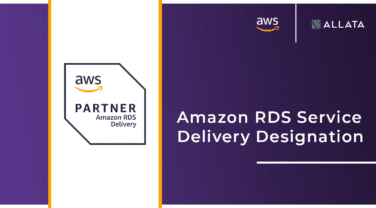In the evolution of application integration, a significant shift has occurred toward embracing open standards, moving away from proprietary technologies and closed ecosystems. Modern development practices prioritize interoperability and flexibility, evident in the widespread use of open standards like RESTful APIs. This shift towards openness extends to cloud-native development with technologies like Kubernetes, fostering scalability and adaptability. Microservices architecture, DevOps practices, and cross-platform development have also embraced open standards, promoting agility, faster releases, and shared codebases. The industry’s commitment to collaboration is further evident in the adoption of open-source messaging software, standardized OpenAPI specifications, and adherence to security standards like OAuth.
Challenges of Open Standards in Integration
Despite the simplification brought about by open standards, persistent integration challenges arise due to factors such as escalating data volumes, the distributed nature of applications, the proliferation of connected devices, real-time data requirements, and the intricacies of integrated ecosystems involving numerous trading partners. While open standards lay the groundwork for compatibility, addressing these challenges requires thorough planning, robust infrastructure, and advanced integration solutions to ensure a cohesive and efficient interconnected landscape. Managing hundreds of integrations becomes a complex aspect of ongoing operations, best tackled comprehensively with a platform-oriented approach to integration. While integrating applications is more straightforward today than it was two decades ago, the sheer number of integrations has significantly increased, calling for a rapid approach to building integrations and a platform-centric approach to managing them.
Legacy Software: A Stubborn Roadblock in Modern Integration
Despite the move to open standards for integration, many companies remain entrenched with legacy software as their integration and data-flow backbone. Over time, legacy integrations have become a form of technical debt ingrained in an organization’s IT infrastructure. This accrued debt presents several challenges, including insufficient documentation, suboptimal integration designs, reliance on workarounds, patches, and the use of outdated technologies. The workings of these critical integrations become tribal knowledge often embedded in a centralized integration team creating a dependency on all projects requiring integration effectively bottlenecking development progress. The consequences of this technical debt include increased development time, elevated maintenance costs, complex end-to-end testing, diminished system reliability, scalability issues, and heightened risks of errors and failures. Effectively addressing this debt demands substantial effort, involving tasks like refactoring, replatforming, comprehensive testing, and knowledge transfer.
The Costly Impact of Ignoring Integration Technical Debt
Integration technical debt has an opportunity cost including lost productivity, missed business opportunities, and an increased likelihood of operational failures disrupting business activity. The compounded financial impact includes labor costs, potential revenue loss, increased operational costs, and considerations of the expenses tied to system downtime or errors. Evaluating long-term costs emphasizes future maintenance expenses, impacts on system scalability, and the risks of security vulnerabilities and compliance issues, underscoring the necessity of managing and mitigating technical debt for sustained efficiency and resilience in integration processes.
Addressing Legacy Integrations to Boost Application Agility
Complex and brittle legacy integrations not only present operational challenges but also act as a substantial bottleneck to application agility. This bottleneck is caused not only by integration complexity but also by the outdated software and personnel that support it impeding the agility of development teams and complicating timely responses to evolving business needs. Operations and maintenance of poorly documented integrations is a burdensome task consuming valuable time and resources. Simple changes often result in complex and time-consuming end-to-end testing requirements. The constraints imposed by outdated technologies and workarounds limit the adaptability of overall application landscape hindering organization’s ability swiftly incorporate innovations and changes. Addressing integration bottleneck crucial unlocking full potential application agility enabling teams respond efficiently market demands foster continuous improvement.
Strategies for Modernizing Your Integration Landscape
To begin a transition towards a more modern integration approach, organizations should strategically assess their current integration landscape. This involves identifying pain points, evaluating scalability, efficiency, and adaptability, and considering contemporary technologies aligned with business objectives. Exploration of Integration Platform as a Service (iPaaS), Open-Source Software (OSS) for Messaging, and cloud-based services provides insights into their strengths and suitability for specific use cases. Leveraging RESTful APIs and GraphQL for web-based integrations offers simplified architectures and increased flexibility. Technologies like change data capture and database replication ensure real-time data consistency. Custom code can be used for APIs and event-driven architecture providing tailored solutions for unique requirements. Also, assessing the financial implications of maintaining a legacy approach is necessary, factoring in potential gains in efficiency, agility, scalability, and reduced maintenance costs offered by modern integration technologies. Establishing a migration roadmap, incorporating phased implementations and pilot projects, validates the effectiveness of chosen technologies in real-world scenarios. Engaging key stakeholders ensures alignment with organizational goals and secures necessary support, ultimately contributing to enhanced agility and competitiveness in your digital platforms.
Evaluating Technology Choices Beyond Cost: A Comprehensive Approach
The selection of integration technology is not purely based on cost, it is important to evaluate factors such as scalability, ease of use, support for various data formats, security, and operations and compliance requirements. Additionally, organizations should assess whether their integration choices align with their long-term IT strategy and unique integration requirements and can adapt to future changes in technology and business needs. Pilot projects or proof-of-concepts can be valuable in evaluating the suitability of chosen technology in real-world scenarios. Calculating the Return on Investment (ROI) for replacing legacy integration software involves a thorough analysis of costs and benefits. In cases where multiple teams work on different integration tools and bottlenecks in project work are experienced due to legacy integrations, the calculation should place a value on the tangible people and technology costs and intangible opportunity costs.
Building Your Business Case for Integrating Modern Technologies
Organizations should begin building their integration business case by identifying current expenses associated with maintaining the legacy integration software, including licensing fees, support contracts, and ongoing maintenance costs. Assessing people costs including team lost productivity is key. Consider the inefficiencies of multiple teams working on different integration tools, project delays due to integration complexity, time spent on tool management, and resolution of integration-related errors and outages. Estimating costs related to integration bottlenecks involves analyzing past projects, understanding delays, and quantifying associated impacts on project timelines. The costs of training teams on new integration tools and the time required for transition, including learning curves and training, must be accounted for. Additionally, estimating implementation costs, and covering software subscriptions, consulting services, and necessary hardware upgrades, are needed. On the benefit side, organizations should evaluate potential increases in team productivity, faster project delivery timelines, reduced maintenance overheads, scalability, flexibility, and risk mitigation. The ROI calculation involves subtracting total costs from total quantified benefits and considering intangible benefits, such as improved team morale, platform agility, and enhanced innovation capabilities.
Comparing Integration Technology Upgrades with Home Plumbing Improvements
Replacing integration technology is like replacing the plumbing in a home involving foundational infrastructure, aging systems, technological advancements, changing requirements, and compliance considerations. Just as upgrading plumbing systems improves water efficiency and overall performance in a household, updating integration technology enhances data flow efficiency, reduces latency, and ensures a business stays competitive and compliant with evolving standards. Both replacements, while involving upfront costs, are sometimes necessary for long-term cost-effectiveness and the adaptability of systems to modern demands.



